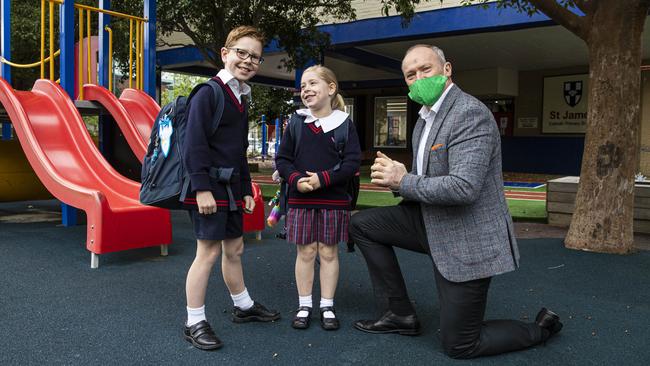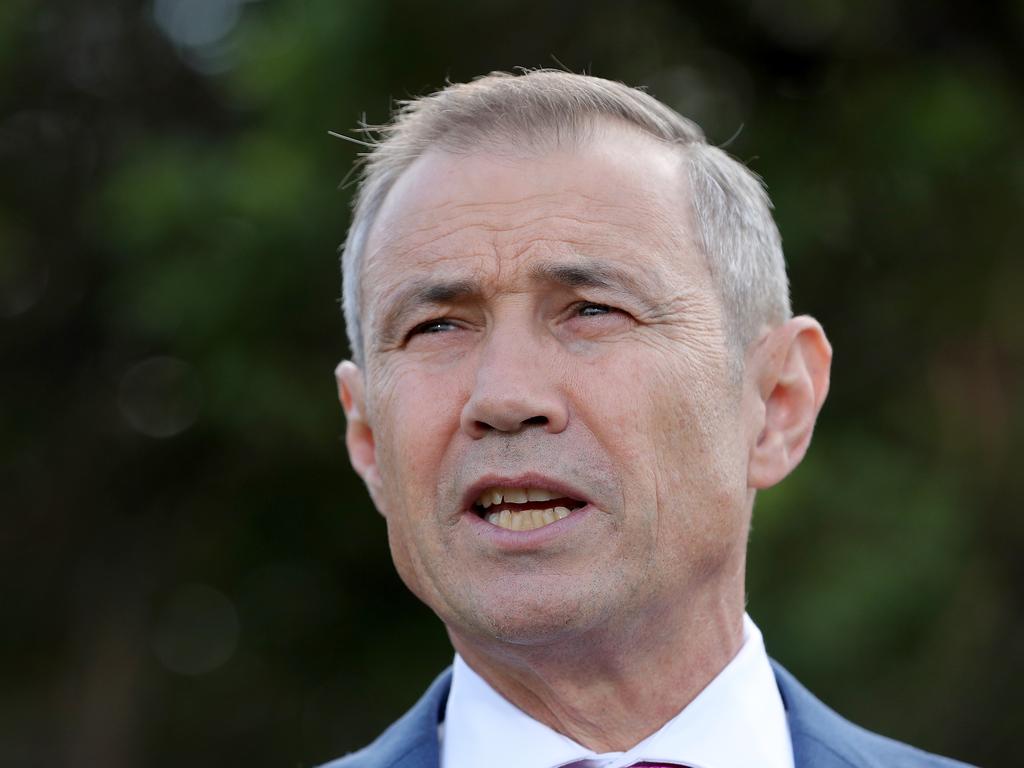Returning schools to major in Wellbeing 101
Victoria schools have been advised to prioritise students’ mental health and wellbeing and pare back the curriculum to focus on key literacy and numeracy skills.

Schools across Victoria have been advised to prioritise students’ mental health and wellbeing and pare back the curriculum to focus on key literacy and numeracy skills when they welcome students back to classrooms this week.
More than 580,000 primary school, Year 7 and VCE students across Melbourne will return to school from Monday, joining regional students who were permitted back last week.
Having experienced the longest stint of remote learning across the country — a metropolitan prep student has spent more of their foundation year at home than in a classroom — questions are being asked about the impacts on learning and development.
Have young children acquired a similar level of literacy and numeracy as they would have had they been in a classroom full-time? Will Year 6 students be well-placed to transition into secondary school? And what of Year 10s set to embark on their VCE years?
For Brighton parents Paul and Kat Cheshire, concerns for their children Harry, 8, and Scarlett, 6, are centred on their emotional health and wellbeing, having seen them struggle at times during the lockdown.
Ms Cheshire said although she was grateful for the time they had spent together, she was keen for the children to have an opportunity to “reconnect with their teachers and their friends”, while youngest child Tom, 3, stays home. “It’s been a little disheartening for our daughter, with this year being her first introduction to school life,” she said. “She is feeling, in some ways, the same apprehension she felt on her first day in leaving Mum and Dad.”
In the wake of research collected during the first wave of the pandemic, the Victorian Department of Education is advising schools that their highest priority during term four should be “mental health, wellbeing and safety”.

A guide sent to all principals last week notes students from disadvantaged backgrounds and those with disabilities have been “disproportionately impacted”.
In regards to learning, which is listed as “priority 2”, the department recommends “student voice and student agency” should set the pace, giving schools increased flexibility in relation to the curriculum. “This is in order to focus on the priorities of supporting students who need additional support to catch up, continuing to extend and stretch those students who have thrived and enabling students to make successful transitions,” it says.
“The focus of curriculum planning should therefore be literacy and numeracy together with time allocated to physical activity.”
The decision to elevate wellbeing over academic outcomes appears to be informed by research done after the state’s initial period of remote learning in term two. A report by the Parliamentary Secretary for Schools, released in September, highlighted concerns for the wellbeing of certain groups of students, particularly Koori students, and those from culturally and linguistically diverse backgrounds.
Challenges identified included students’ anxiety over their own health and wellbeing, or for family overseas; parental unemployment or housing upheaval; as well as being socially isolated.
Focus group research undertaken in June confirmed that some students had struggled because of lack of interaction and that disruption to regular routines had impacted on some people’s sense of “wellbeing, motivation, general happiness and possibly their mental health”.
Students’ academic progress is also understood to have varied significantly over the period.
While principals of well-resourced metropolitan schools reported that students, especially those supported by highly engaged parents, had continued to learn successfully, researchers say impacts aren’t fully understood.
In its independent report analysing the Victorian remote learning experience, Learning First noted many schools had dropped subjects, trimmed content within subjects and reduced workload.
“As schools entered the final week of term two, a department survey found that between a quarter and a third of schools have yet to reach a conclusion about the academic progress of a majority of their students,” it said.

“Nearly one in five principals reported concern or strong concern about the lack of academic progress during remote learning.”
Much can be learned from NSW, which reopened schools in term two. While a NSW Education Department spokesman said no centralised data had been collected on the impact of remote learning, work was ongoing in supporting students. “Since the return to school, over 80 per cent of NSW public schools opted in for an online reading and numeracy check-in assessment for students in Years 3, 5 and 9,” he said. “The check-in assessments provide additional information … to identify how students are performing.”
Victoria has licensed the check-in from NSW.
Re-engaging students will be a key focus for teachers at Drouin Secondary College, a large regional school east of Melbourne.
Analysis of students’ work throughout term three revealed that while students who completed 100 per cent of tasks increased compared to 2019, so did the number of students who completed just 40 per cent or less.
“It is these students we have to re-engage on Monday,” said deputy principal Rob Monk. “We’ve asked teachers to reset the tasks for each student … to get (them) feeling they are still a chance to catch up. Students who did the learning tasks during lockdown will benefit from that, but there’s not a lot to gain for those who didn’t by having 20 overdue tasks hanging over (them).”
Mr Monk said he questioned the need to prioritise wellbeing over learning, which he believed should always be the “core purpose” of schooling.
In the Melbourne suburb of Brighton, St James Catholic Primary School principal Brendan Flanagan said his teachers had done an exemplary job, “but we know students have especially missed being able to engage with teachers as they normally would and the social interaction with friends. My instructions to staff have been: ‘Let’s provide plenty of opportunity in this first week back for play, for fun, for building those relationships and making those connections.’ ”







To join the conversation, please log in. Don't have an account? Register
Join the conversation, you are commenting as Logout